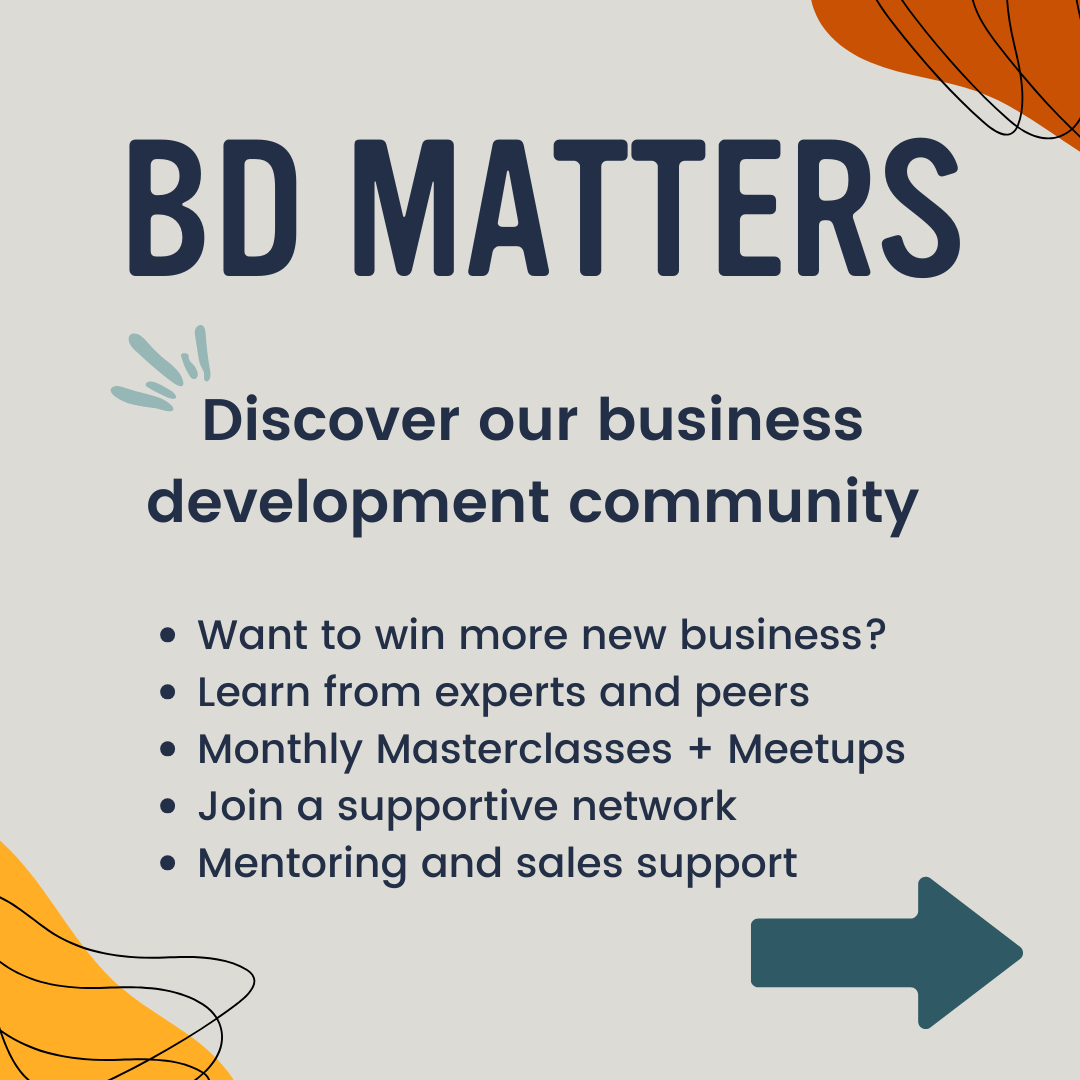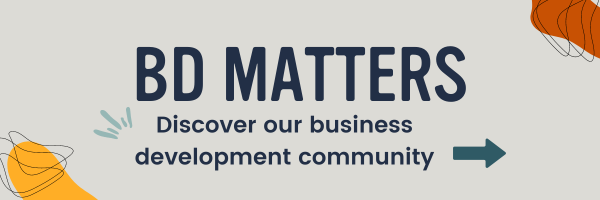
Optimising your sales machine
January 31, 2024
Speak to most business owners and they’ll say they have peaks and dips in their new business performance – and whilst I don’t pretend to predict the future – I do know that a consistent output will build a more level and sustainable pipeline.
But how do we get there!?
To create a more sustainable sales strategy you must move through a continuous process. Here are three journeys your company must go on:
- Sales Transformation
- Sales Enablement
- Sales Effectiveness
So let’s unpack what I mean by each one, and what you can do to improve your sales performance.
Sales Transformation
First you must build the foundations for sales to be successful. The key components to this are the mindset and culture of the business, your business positioning, growth plan, and the processes and resources that sit behind the sales machine (sometimes called RevOps). They are all just as important as each other and they can be handled linearly. For example, unless you get your mind right about sales, the rest is doomed for failure; and your positioning has to go before your growth plan.
The best place to start is with audits; these can be in the form of workshops, 360 interviews, and external analysis in order to identify the weaknesses and opportunities in your new business plan. Once you get some well informed and experienced advice you can start to build the new foundations for success. These are also some of the most difficult aspects to conquer, particularly when it comes to mindset and your organisation’s positioning.
Getting in the right headspace for how the full sales cycle works can be daunting for most, and unpleasant for the rest. But it doesn’t have to be.
Truly engaging with how sales works requires you to throw yourself in at the deep-end, from the coldest conversation, to unproven marketing tactics, to investing money – enjoying the highs, and the sobering lows. This is the beauty of sales! But if you can’t see beauty in the struggle, then you’ll never see happiness in the success.
I get that sales is not for everyone, and thankfully I learned to love sales but it wasn’t always that way, until I accepted it. I accepted the rejection, I accepted the hard slog, because what it did was make me better and stronger at sales. I learned how to operationalise new business and then it became easier and enjoyable. And I refined my technique through making mistakes. I turned sales into a game.
Once you accept the constant burden of sales, it goes away – it’s just part of life. Sales isn’t getting any easier. The more you grow, the bigger your overheads, the more sales you need. Your sales problems aren’t going anywhere, ever. So you can try to run and hide from them by outsourcing or delegating, but sooner or later that system is going to fail and you need to be able to pick up the pieces, or you’ll end up with a big fat hole in your pipeline.
Beyond getting your head in the right space I’ve written plenty of blogs about positioning, CRM systems and new business processes, and these are all essential for sustainability.
Sales Enablement
So you’re out of the traps but you need the right stability, otherwise your Bambi legs are going to land you flat on your face. Once you have the building blocks in place you can start to build the architecture for which a growth plan can function consistently. It needs to be smart, well thought through; consider your positioning in the market alongside your commercial goals and your vision, and consider your budgets and capabilities. I didn’t say this was going to be easy.
Whilst some might refer to a couple of spreadsheets, a makeshift CRM and a personal assistant to run their sales machine, you might want to think about some upgrades. Let’s start with the people. Finding the right ones is tricky and you often need three different types of people; the strategic thinker and experienced closer, the sales hunter gatherer and the inbound marketing attract-y person. But that could cost you a lot of money, so on your journey you will want to use freelancers or outsourced consultancies to prop you up.
To be successful, the first thing any sales person needs is complete clarity and boardroom alignment on the business positioning – not an internal debate that means they have to manage conflicting stories and people. Then they need that positioning articulated clearly through sales credentials and a website – not something that does a makeshift job or one you’ve been promising to update for two years but keeps getting pushed back because client work takes priority.
They need a leadership team willing to listen and make things happen quickly, alongside a team that understands their role and the importance of supporting the salesperson. This might require additional work where people go above and beyond. They will need case studies and a constant flow of marketing output to help raise awareness and generate MQLs. They will also need people to attend speculative meetings, write proposals and help to nurture prospects. Salespeople might be the engine but they are not the whole machine – think of them as a cog that drives all the other cogs. Not someone who needs to deliver all the results alone.
If you do these things and truly commit in terms of money and time, then you will be giving them the best possible environment and infrastructure to deliver the results. Then it’s down to them.
Sales Effectiveness
As time goes on, you’ll want to continually tweak and improve your sales machine. To do this, you’ll need to understand what’s working and what’s not. It helps to break down the process to more easily identify this.
Many people come to us and say “We have a new business problem”, which in my head then means I have to narrow it down to understand which part of the sales cycle they are struggling with. Do I need to go back to the drawing board with mindset and positioning? Or have they got the right foundations in place but they’re just not converting leads? By breaking down the sales funnel and the different components that lead to sustainable success, you can then isolate the problem. Without doing this, ‘fixing’ new business can be far too overwhelming and you end up focusing on the wrong thing.
Reporting is going to be key here. You should be looking at dashboards in your CRM, but there are manual and automated ways of building reporting. It’s important to look at lead and lag factors; lead factors are things you can control e.g. how many blogs are you going to write, or cold emails will you do, and lag are things you can’t control such as how many opportunities you will get and pitches you will win. The best way to start is to look back historically at old data on where leads have come from and how many have you won and lost. You can then start to look forward to considering your objectives and what is feasible for you to achieve, set yourself KPIs.
You want to track these monthly and sit down each month to review your performance. Are you hitting your lead factors that you can control, and if not, why? Are you generating the types of results you’re looking for? If not, analyse why it’s not happening and make marginal improvements to your process. Talk to your team and prospects, and learn from the feedback. Don’t be afraid to make changes, but don’t chop and change all the time, sometimes results can take longer than you think, and I often see people give up too soon. Once you isolate the areas in your new business machine that are working, you know you can continue on that trajectory, allowing you to tweak the areas that are less effective.
When we first sit down with a client, we score them in 4 areas out of 10:
- Mindset and Culture
- Positioning
- Growth Plan
- RevOps
If you start to take a similar approach, you can establish your strength in these areas and look to address them one by one. Don’t run before you can walk! You don’t want to build your growth plan on a house of cards, because ultimately if you’re not in the right headspace to take on new business, and your positioning isn’t aligned to your DNA or what your target audience need, then no matter what you do in your growth plan – it won’t work.
Hence why I like the word transformation and thinking about this as a machine that needs optimising.
Want to know more? Book a call and let’s discuss.

